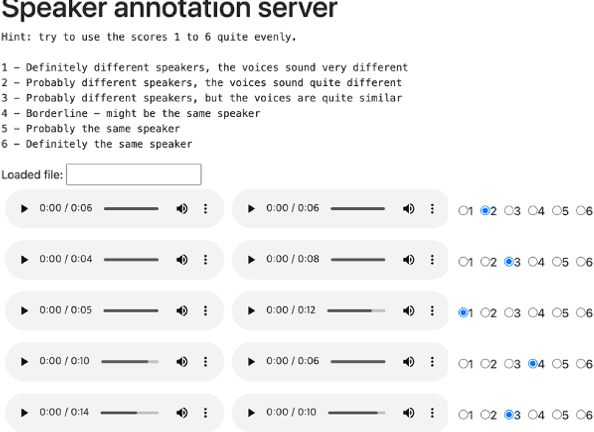Doyeop Kwak
VoxSim: A perceptual voice similarity dataset
Jul 26, 2024



Abstract:This paper introduces VoxSim, a dataset of perceptual voice similarity ratings. Recent efforts to automate the assessment of speech synthesis technologies have primarily focused on predicting mean opinion score of naturalness, leaving speaker voice similarity relatively unexplored due to a lack of extensive training data. To address this, we generate about 41k utterance pairs from the VoxCeleb dataset, a widely utilised speech dataset for speaker recognition, and collect nearly 70k speaker similarity scores through a listening test. VoxSim offers a valuable resource for the development and benchmarking of speaker similarity prediction models. We provide baseline results of speaker similarity prediction models on the VoxSim test set and further demonstrate that the model trained on our dataset generalises to the out-of-domain VCC2018 dataset.
Faces that Speak: Jointly Synthesising Talking Face and Speech from Text
May 16, 2024



Abstract:The goal of this work is to simultaneously generate natural talking faces and speech outputs from text. We achieve this by integrating Talking Face Generation (TFG) and Text-to-Speech (TTS) systems into a unified framework. We address the main challenges of each task: (1) generating a range of head poses representative of real-world scenarios, and (2) ensuring voice consistency despite variations in facial motion for the same identity. To tackle these issues, we introduce a motion sampler based on conditional flow matching, which is capable of high-quality motion code generation in an efficient way. Moreover, we introduce a novel conditioning method for the TTS system, which utilises motion-removed features from the TFG model to yield uniform speech outputs. Our extensive experiments demonstrate that our method effectively creates natural-looking talking faces and speech that accurately match the input text. To our knowledge, this is the first effort to build a multimodal synthesis system that can generalise to unseen identities.
 Add to Chrome
Add to Chrome Add to Firefox
Add to Firefox Add to Edge
Add to Edge